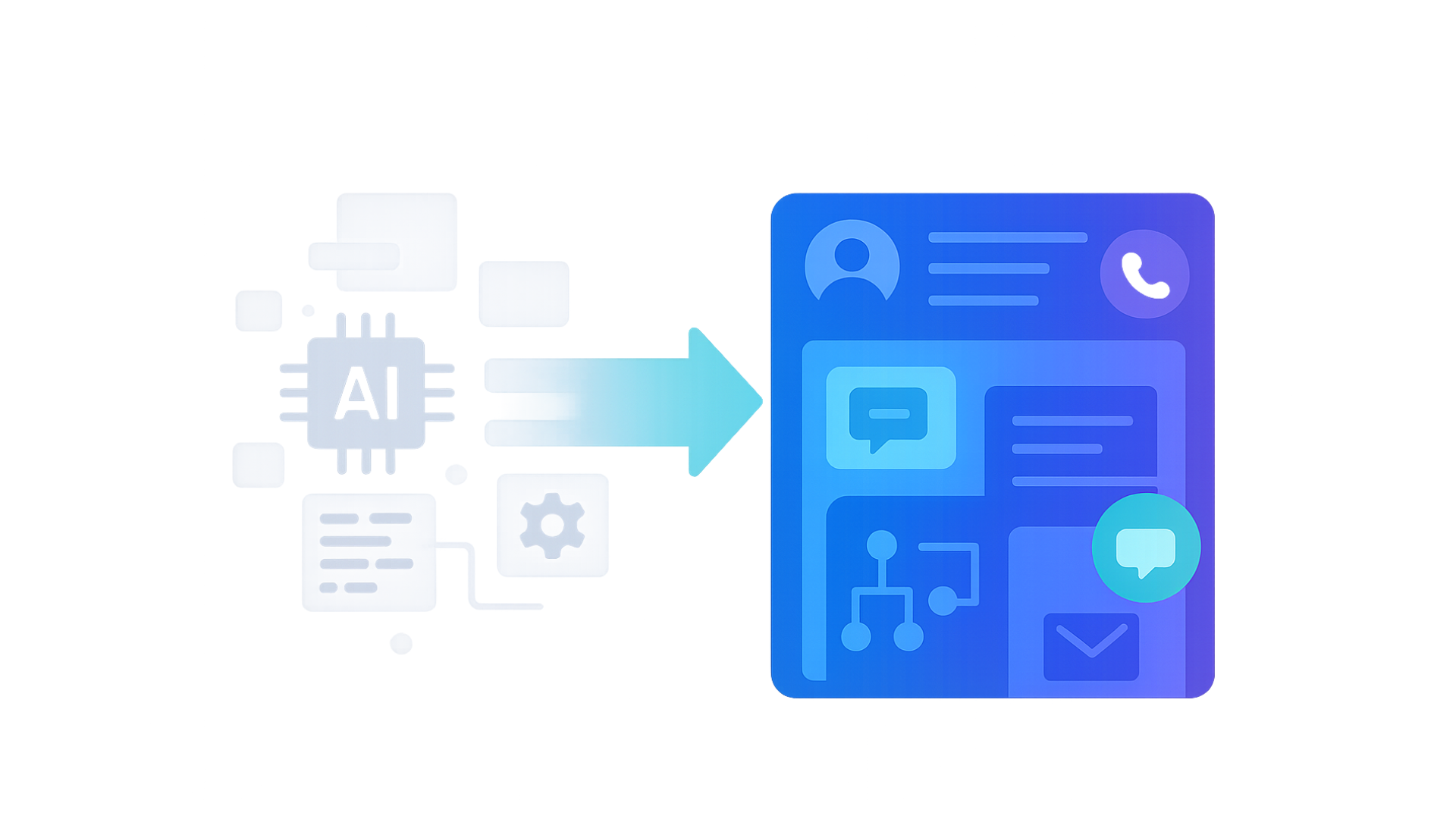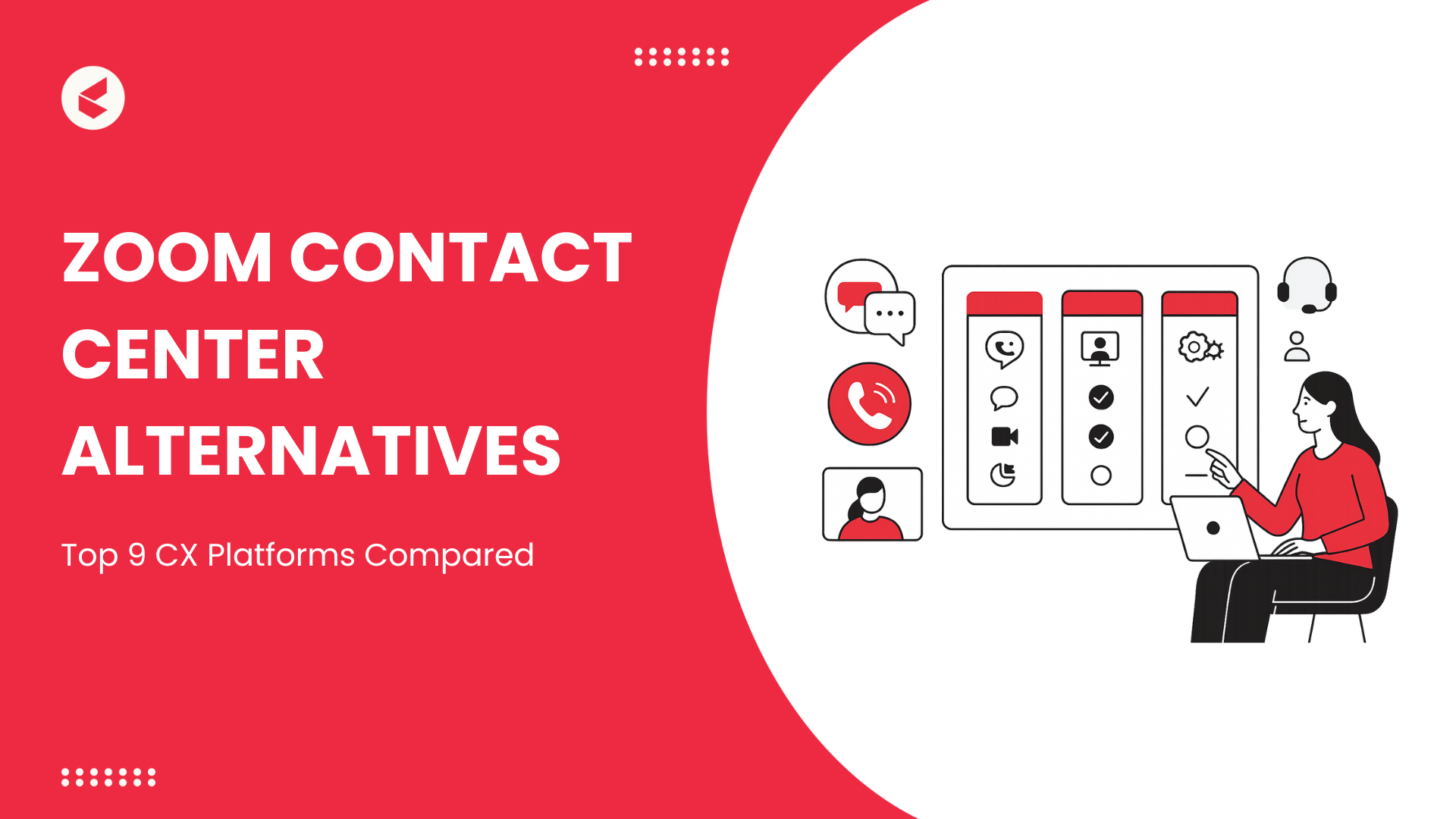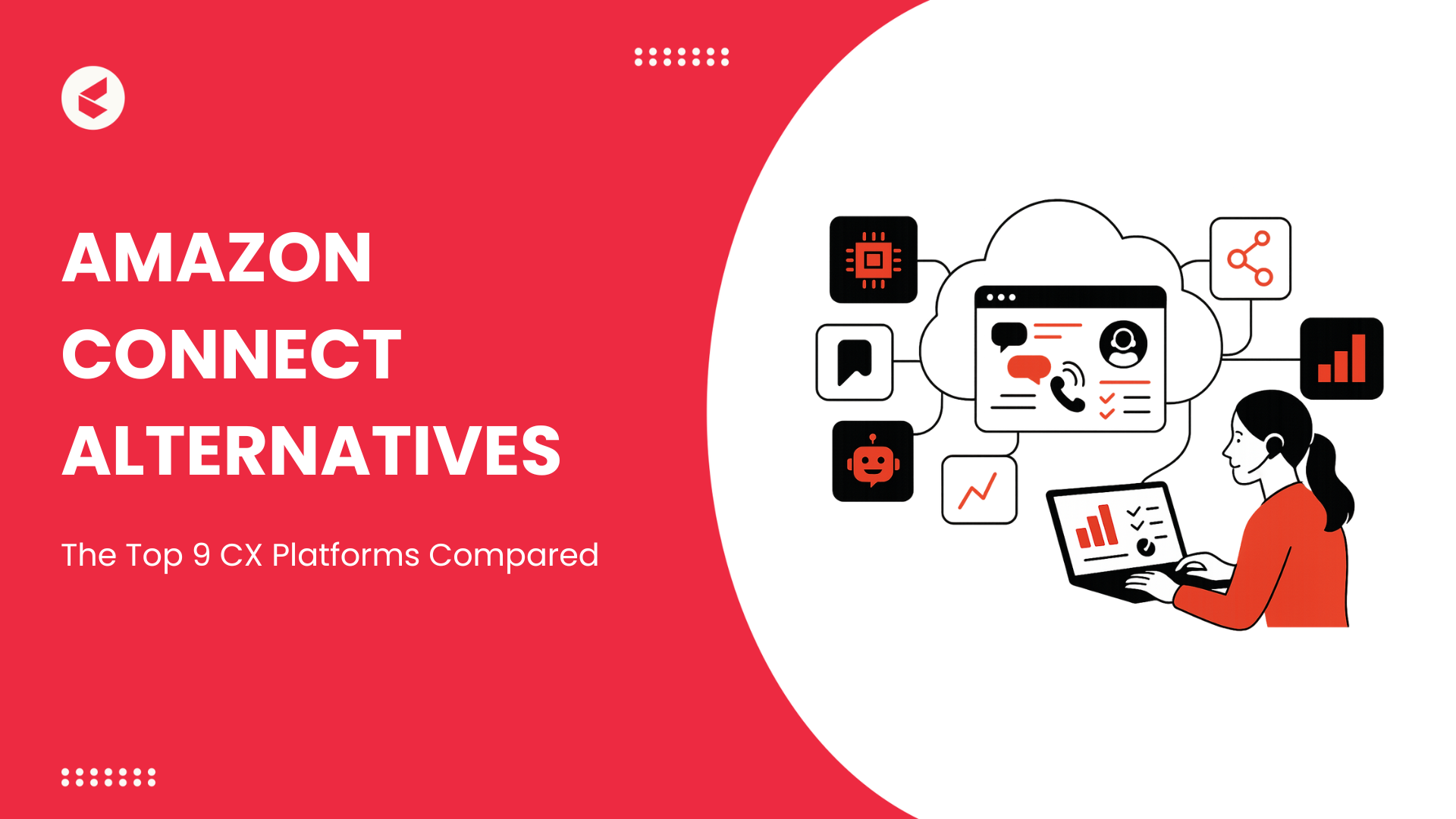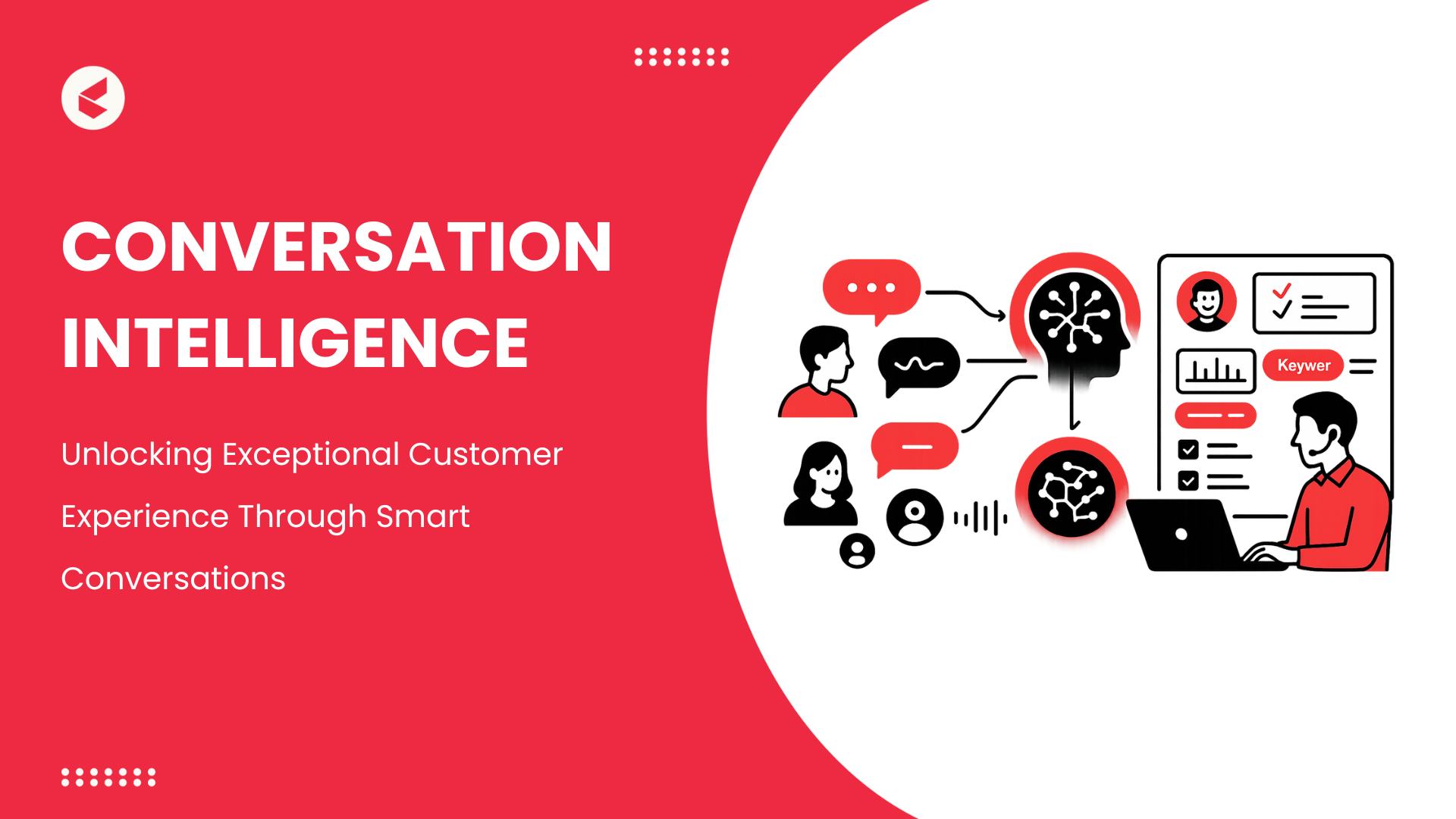Ten years ago, the idea that AI would reshape customer experience sounded like a punchline. Today, it has become routine. Support teams now tune models instead of scripts, and managers trade “empathy workshops” for deployment reviews.
Yet, for all its progress, most AI in customer experience still doesn’t get it. It automates without understanding, replies without awareness, and traps customers in robotic loops that feel more bureaucratic than intelligent.
The problem isn’t speed or scale; it’s the context.
And customers feel it too. According to a PwC study, 54% of U.S. consumers say that customer experience at most companies needs significant improvement, proving that automation without context isn’t enough.
Take a frequent flyer stranded overnight after a canceled flight. The airline’s chatbot greets the passenger by name, apologizes automatically, and suggests irrelevant rebooking options. It sees data points and gives them replies accordingly without understanding their situation.
This is where vertical AI comes into the picture. Instead of aiming to serve everyone, Vertical AI is built for one domain. It is trained on the language, workflows, and edge cases of a specific industry. It connects dots that generic systems miss.
In this article, we’ll unpack why context is the missing ingredient in enterprise CX and why vertical AI might be the only way to fix it.
What Context Actually Means in AI-Powered CX
In customer experience, context is about giving AI the same mental model a seasoned employee has. Context is the sum of three things: domain logic, customer signals, and workflow dependencies.
In banking, for example, AI shouldn’t just “know” a customer wants a loan; it should understand the regulatory guardrails, KYC verification stages, and what a risk flag actually implies for that specific transaction.
Similarly, in retail, it’s not enough to match an SKU and just send the update. Contextual AI integrates inventory data, return history, and current promotional logic to recommend solutions that safeguard both revenue and trust.
Context in the travel industry refers to knowing how a last-minute cancellation affects schedules, partner networks, compensation policies, and matching resolutions with passenger rights and brand promise.
Even the most intelligent AI becomes performative without this depth, meaning it can converse fluently but is tone deaf to context. True contextual intelligence lets AI act, not just react. It moves beyond scripted automation into operational awareness.
Why General AI Falls Short in Enterprise CX
It can be tempting to implement a broad “one-size-fits-all” AI approach in business customer experience (CX) contexts. However, in practice, general-purpose AI frequently lacks the deep subject knowledge needed for enterprise workflows, and this mismatch manifests itself in actual expenses.
- Generic Models Miss Nuance: They deliver weaker accuracy, misjudge tone, or breach compliance rules. For example, according to research by GSDcouncil, generic models may achieve 70-90% accuracy on specialised tasks, whereas domain-specific models often reach 95-99% accuracy in their niche.
- Lack of Explainability: Generic models find it difficult to give the traceable rationale that auditors and regulators want.
- Slower Deployment: This is because customization and retraining are heavy tasks. General models require long cycles of fine-tuning on proprietary data before they stop hallucinating.
- Higher Risk of Bias and Trust Erosion: Without domain-specific tuning, models may produce errors that damage brand credibility and customer confidence.
- Integration Complexity and Hidden TCO: Attaching a generic model to CRM, entitlements, billing, and compliance systems results in expensive glue code and continuous maintenance that reduces return on investment.
The Rise of Vertical AI: Tailored Intelligence for CX
Vertical AI is built around an industry’s language, customer insights, and decision paths. It knows product taxonomies, SLA matrices, and regulatory clauses, just as your human agents do. It is trained to think like your human agents. It speaks the same jargon, understands the same data quirks, and follows the same rules your teams do.
For instance, a retail vertical model uses a normalized product graph + attribute embeddings. When a customer asks, “Is the red linen dress returnable after 30 days?” the system matches the SKU to policy nodes, checks promo overrides, and returns a precise, auditable answer.
No per-SKU labeling would be needed here because the model ingested catalog schemas, historical returns, and store-level exceptions, generated synthetic queries for gaps, and validated outputs in shadow mode. It results in near-zero escalations, faster resolutions, and traceable decisions.
Let’s look at a few practical benefits of Vertical AI:
- Pre-Trained on Domain Intents: To reduce false positives, models arrive with intent priors (such as refund, warranty, and cross-sell) that were learnt from industry corpora and mapped to business activities.
- Faster Time-to-Value: Schema-driven ingestion and automated product graph alignment eliminate months of manual labelling. You deploy with live connectors to CRM, OMS, and policy engines.
- Built-in Compliance and Audit Trails: Every recommendation carries provenance metadata (source, confidence, rule path), making audits and approvals straightforward.
- Robust Edge-Case Handling: Rare failure modes are revealed before clients notice them due to synthetic edge-case generation and shadow-mode testing.
The Architecture Advantage: From Models to Modular Agents
The architecture of vertical AI moves well beyond a single chatbot widget. It integrates across workflows, connecting ticketing systems, CRM entries, billing engines, and live-operational platforms. This helps the AI shift from isolated responses to end-to-end orchestration.
With vertical AI, multi-agent collaboration becomes the norm. One agent handles self-serve requests, another triggers assist workflows, and a third runs QA and escalation logic. In fact, according to Cloudera, nearly 96% of companies plan to expand the use of contextual AI over the next 12 months.
This is the moment when you can shift from thinking of “an AI model” to building an “AI agent ecosystem.” Instead of deploying a single model, you deploy modular agents that communicate with each other, share context, escalate when needed, and align with business logic.
Why Context Is Key to Trust and Compliance
In industries where a wrong answer can trigger financial, legal, or ethical consequences, context becomes the control layer that makes AI both reliable and accountable. It’s what turns automation into assurance.
Here are a few reasons why context is necessary in the use of AI:
- Context = Explainability: It’s the “why” behind AI actions. Context grounds every output in logic. When an AI explains why it denied a refund or flagged a transaction, it draws on policy data, workflow rules, and prior cases. This explainability, emphasized in IBM’s governance-first AI frameworks, is what regulators and customers demand, i.e., traceable reasoning over black-box decisions.
- Enables Audit Trails for BFSI, Healthcare, and Travel: Vertical AI embeds compliance schemas directly into decision paths. Every action, from credit approval to prescription validation, carries metadata about inputs, models, and rule sources. This creates audit-ready lineage without retrofitting governance later.
- Prevents Hallucinations and Tone Mismatches: When models are trained in context, they don’t invent policies or misread emotion. Context filters outputs through truth and tone, which are the twin pillars of trust.
The Future: From Generic to Generative-Plus-Contextual
Customer experience AI is entering its next phase, i.e., moving from language generation to decision orchestration. The real shift isn’t in how well AI writes, but in how intelligently it acts.
Here’s what the shift is leading to:
- Contextual Workflows: The next generation of CX systems will analyze real-time business data, consider possibilities, and initiate activities across linked workflows rather than generating polished responses.
- Customizable Vertical AI: Enterprises will no longer settle for off-the-shelf assistants. They’ll demand customizable vertical LLMs that can learn evolving business rules, adapt to compliance changes in real time, and refine their reasoning through feedback loops.
- Vertical AI Meets agentic architecture: Each agent, specialized yet interoperable, collaborates to manage complex customer journeys. Together, they’ll form a dynamic network of context-aware intelligence, i.e., less about conversation, more about coordinated decision-making at enterprise scale.
How Kapture CX Delivers Vertical AI for Enterprise CX
Kapture CX brings vertical intelligence to industries where context defines success. The platform’s AI isn’t trained on generic conversation logs. It’s trained on billions of support interactions collected from BFSI, Retail, and Travel, enriched with synthetic cases that cover rare scenarios most models never see. That mix gives the system a working grasp of real customer behavior, operational quirks, and the edge cases that usually trigger escalations.
Because Kapture works with some of the largest banks, insurers, retail chains, and travel operators in the region, its models learn from customer journeys at scale — high-volume complaint categories, repeat failure modes, regional policy variations, and seasonality patterns.
Kapture’s agents don’t rely on surface-level cues. In BFSI, for instance, they run KYC checks, parse policy clauses, and map queries to the right regulatory logic.
In the retail industry, they resolve SKU-level inquiries using catalog intelligence. In travel, they manage itinerary disruptions while adhering to refund and rebooking policies. Every action is traceable, auditable, and aligned with enterprise governance.
Kapture’s modular setup gives enterprises room to expand. New workflows can be added without tearing down existing systems, and the agents keep learning from live tickets, QA feedback, and synthetic reinforcement loops. The outcome is a system that scales with the business instead of dragging it into long integration cycles.
Ready to experience AI that speaks your industry’s language? Request a demo and see how Kapture CX can transform your enterprise CX from reactive to truly intelligent!













